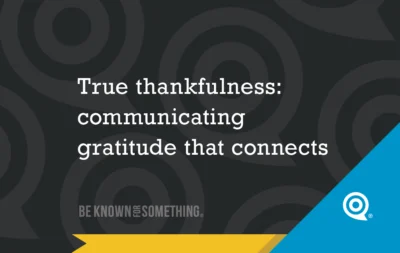Caution: Church Avoid Category Exhaustion! (5 Ways)

An attractive church brand is known for something that’s beneficial. Of course a church is needed because it speaks to our spiritual deficits. Plus it’s a fellowship of Christ-followers who wrestle with similar issues all while loving neighbors as Christ loved us. But everyone doesn’t know that.
Jesus said we’d be known for having love one towards another. That’s quite a brand! Different communities have different needs and interpret love differently. That’s how churches can develop different brands and still feel uniquely different. It always comes down to defining your audience.
Being known for a thread (that thing that sets you apart as a church) requires consistency of messaging, keywords, and vision. If you’re not controlling them, you don’t have a brand. Your controlled thread IS your brand. It should engage people so you can connect them to Jesus.
The biggest issue that occurs on a branded path is boredom. Be careful that your brand doesn’t stay in such a narrow lane for an extended period of time or you’ll experience category exhaustion.
Here are 5 ways to avoid category exhaustion:
- Make sure your thread is big enough. The broadness (ambiguousness) of your thread should reach outside of several categories. For example: A thread like “Life. Discovered.” can speak into many categories (like employment, spirituality, friendship, etc.). It’s fairly broad and makes it interesting as you uncover new horizons.
- Make sure your thread is needed. An effective thread corresponds to several groups AND connects to several needs or goals. A thread (tagline) should evoke a need in your community. For example: “Life. Discovered.” says your community is seeking something bigger. Perhaps it’s a research community with many scientists, professors, or medical personnel. They’d be attracted to the idea of discovery. And it also connects to our spiritual predicament with a solution.
- Make sure secondary issues are connected to your thread. When something outside of your thread drastically affects your community (i.e., COVID19) then you’ll want to address it under the umbrella of your thread. For example: “3 Ways to discover life when socially distanced”. This feels like you’re an expert in discovering life (your brand), rather than a virus expert.
- Make sure secondary issues don’t obscure your thread. Your audience leads your brand and communication. THEY determine your thread. Secondary issues may affect them but your thread must start the discussion (and not the other way around). For example: “Discover family life under quarantine” rather than “How our church is dealing with the quarantine”.
- Make sure you’re monitoring your audience’s needs regularly. People are quick to feel overwhelmed. In fact, if “everyone” is adding a voice to a secondary issue, it can become exhausting. For example, after months of COVID19 talk, a sermon series on “Social Distancing” or “Staying Healthy” will be tuned out from a virus-weary audience. Look around, it may be refreshing to do another topic. Give your people a break (but stay in your thread).
Want 25 Game-Changing Resolutions?
Related Posts

True thankfulness: communicating gratitude that connects
We’re just a couple weeks away from Thanksgiving. Though you might not know it by the jingling commercials already flooding

AI Prompts Every Church Communicator Should Be Using
Artificial Intelligence (AI) isn’t replacing church communicators, it’s simply helping the good ones work smarter. Tools like ChatGPT (and similar)

Church Growth Strategy: Clarity That Connects
Most churches pray for growth but overlook one of their most effective tools: a clear church growth strategy built on

